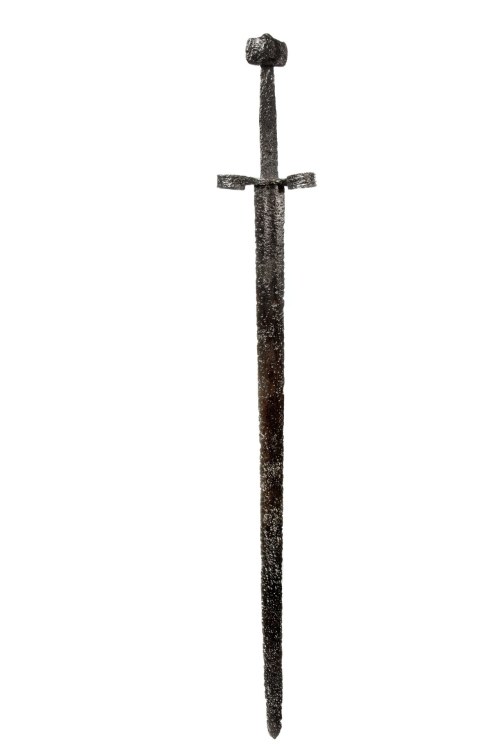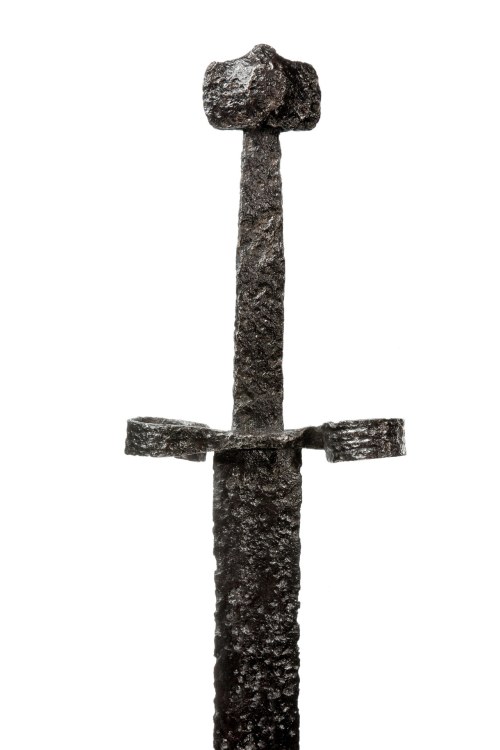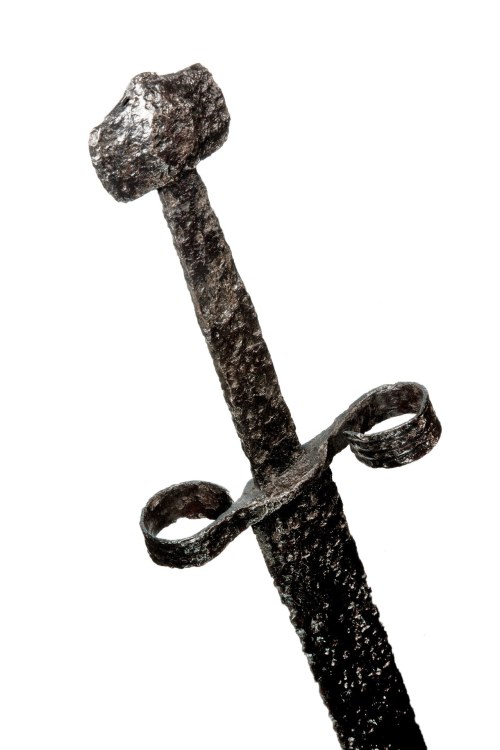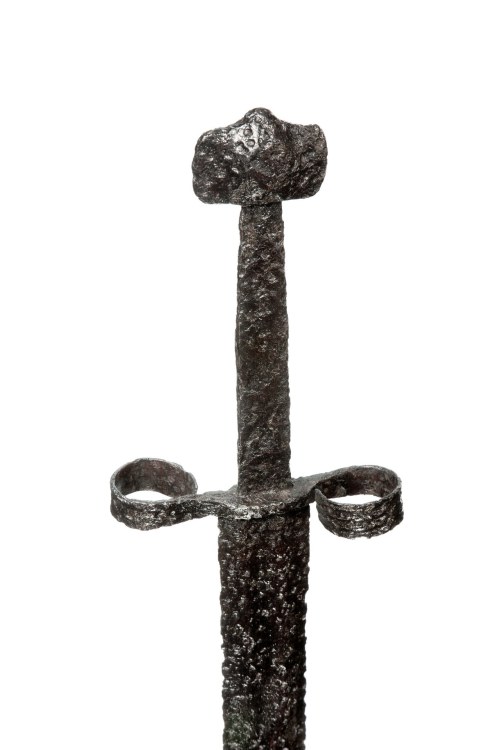schwerterundstickerei:notactuallythor: A SOUTHERN EUROPEAN ‘SWORD OF WAR’, PROBABLY
schwerterundstickerei: notactuallythor: A SOUTHERN EUROPEAN ‘SWORD OF WAR’, PROBABLY HUNGARIAN, 15TH CENTURY The thin rectangular pommel is formed of two parts with a raised central protrusion on each face, and this surmounts a tang of ‘hand and a half’ length. The very distinctive crossguard features strongly recurved arms that form a tight ‘S’ shape when seen from above. The arms of the crossguard are also incised with three simple, decorative furrows that run from the edges of the central swelling of the guard to the tips. The edges of the long, broad blade are almost parallel for most of their length and taper very subtly towards a spatulate tip. A broad and shallow fuller runs for about half the total blade length on each face. In excavated condition, with a dark blackish-brown patina overall. This striking example of a great ‘sword of war’ belongs to an interesting subgroup that may be said to originate from late medieval Hungary, although broadly similar swords may also be seen in the armoury of the Doges’ Palace in Venice. Blades of this type were very popular across Europe from the late 13th century and were optimised for dealing very heavy slashing blows and can be classified as belonging to Oakeshott’s Type XIIIa. The type seems to have remained in use throughout the fifteenth century in southern and eastern Europe, and a small group of examples with the distinctive regional style of our sword are known to exist. The most obvious regional characteristic of the type can be seen on the crossguard, the arms of which are tightly curled into an ‘S’ shape when viewed from above. To either side of the central swelling to accommodate the blade, these arms have a ribbon-like cross section and expand slightly towards their tips. Although this S-shaped guard is predominantly an aesthetic feature, it is thought that the design had the additional benefit of protecting the wielder’s hand to some extent. A good example of this type of guard may be seen in an anonymous Hungarian painting depicting St. George, dated c. 1480, in the Christian Museum at Esztergom (Inv. No. 55.69). Another common feature of the type is the broadly rectangular pommel, which is quite lightweight and formed from two sections that have been braised together. The low weight of this type of pommel results in a sword that would have been quite blade-heavy, but very effective against a lightly armoured opponent. A few other swords of this group are known to have thin octagonal pommels. Source: Peter Finer - Fine Antique Arms, Armour & Related Items I’ve seen another sword very similar to this. Maybe at the Met in NYC? Maybe in Philly? Can’t remember :-/ -- source link
Tumblr Blog : notactuallythor.tumblr.com
#longsword#hungary#history#artifact#archaeology



